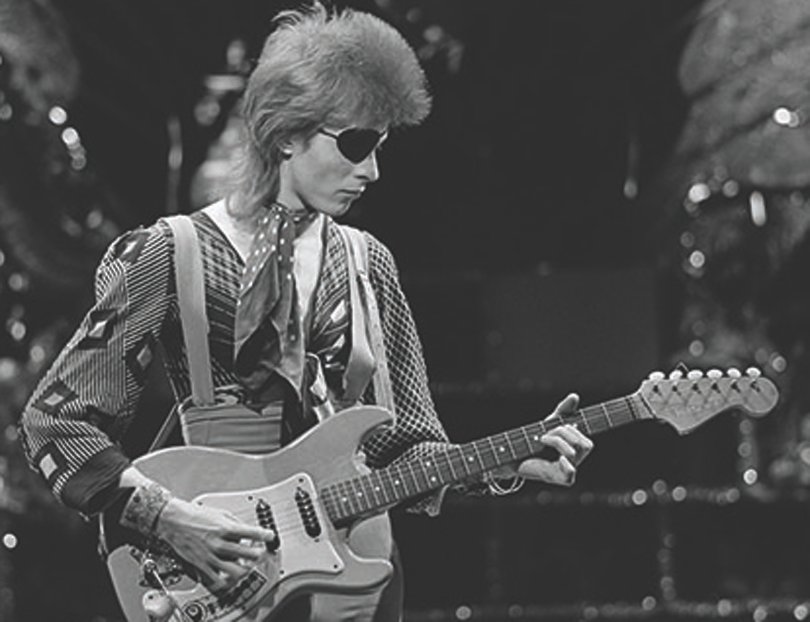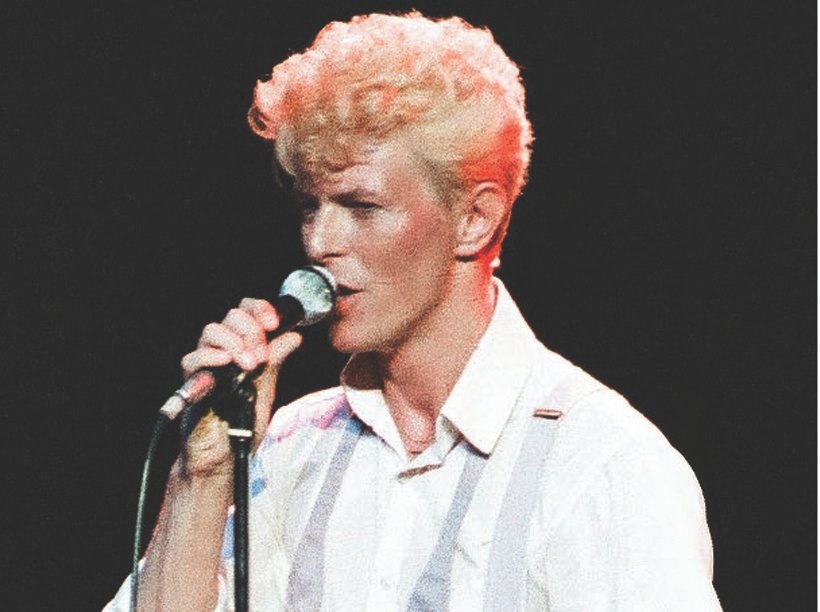The many faces of the original pop chameleon
Everyone knows David Bowie liked to present changes of persona to his audience. But the Brixton-born, Beckenham-raised star, who would have been 75 this month, was always trying to push the boundaries of his creativity. The most crucial change in the Starman was from the self-destructive hedonist chameleon of the early 1970s to hitting rock bottom with the album Low in Berlin in 1976, claims TOBY PORTER
David Bowie liked faux snake-skin suits – he was wearing one for his seminal 1972 appearance on Top of the Pops which shocked the nation and made him a star.
But he liked to shed them – just when they had got comfortable, he would give his audience the slip.
Like Alice Cooper around the same time, he created a character – but unlike the US rocker, he was able to stop fans thinking that 3D avatar was him.
He never wanted to be the costumes he put on. But for all the early 1970s, he was taking some mood-altering drug, as he switched from the long-haired adrongeny, to Ziggy Stardust, to soul boy and the Thin White Duke.
But he was killing himself with his schedule and the cocaine – he said he had several brushes with death.
It’s telling, though, that when he fled to Berlin in 1976, he asked Brian Eno to help him with his next album, Low, which was profoundly influenced by German electro-pop of the time, especially Kraftwerk.
He told the former Roxy Music keyboard player that the result was much more what he wanted to be doing. And it was the spark which inspired countless works of electronica afterwards – Gary Newman, Joy Division, Soft Cell, the Communards, the Pet Shop Boys.

But for me it is not just another character change – it is the end of Bowie on a Bender from Beckenham; and the beginning of Bowie rebuilding himself from scratch: Bowie on a bike in Berlin.
One track, Always Crashing in the Same Car – is a sign he recognised his patterns of behaviour were making him self-destructive.
For whatever reason – perhaps some family trauma while he was at home or at school in Brixton – in his personal life he was making the same mistakes time and time again.
Another track, Warszawa, used a Slavic folk tune and phonetic sounds – not words – which is as close to a cry for help as possible without actually using the word.
It is the start of what’s called the Berlin Trilogy.

Low’s single, Sound and Vision, was a ray of light in the dark. But the next album, Heroes, showed how far he had come in reconstructing himself, and how quickly.
He then went on to the metallic circus of Scary Monsters, the flat-out commerciality of Let’s Dance, the back-to-basics thrash of Tin Machine and on.
If he’d been alive today, aged 75, he would have been shedding characters, not skins, knowing they were just clothes he could put on every day – and leave behind. They were never him.
Bowie had been born David Robert Jones on 8 January 1947.
Bowie’s boyhood house, in Stansfield Road, was just 250 yards from the front portico of the Brixton Academy, where he would perform in 1991.

Just another 50 yards on is Stockwell Primary School which, when it was Stockwell Infants School, was where the Starman first learned to string together the sentences which would one day make him one of the most influential songwriters on the planet.
Biographer Christopher Sandford said while Bowie was there he had a “reputation as a gifted and single-minded child – and a defiant brawler.”
Suffragette City, the pre-punk anthem from The Rise and Fall of Ziggy Stardust and the Spiders from Mars, refers to “my schooldays insane – my work’s down the drain”.
From 1953, Bowie moved with his family from Brixton to Bickley and then Bromley Common, before settling in Sundridge Park in 1955 where he attended Burnt Ash Junior School.
His voice was considered “adequate” by the school choir.

When he was nine, his father brought home a collection of American 45s by the Teenagers, the Platters, Fats Domino, Elvis Presley – who shared Bowie’s birthday – and Little Richard.
On listening to Little Richard’s song Tutti Frutti, Bowie would later say that he had “heard God.”
In 1957, Bowie took up the ukulele and tea-chest bass and started to play the piano.
After Burnt Ash school, Bowie went to Bromley Technical High School.
He suffered a serious injury in 1962 when his friend George Underwood punched him in the left eye during a fight over a girl. The damage was never fully repaired by several operations and his pupils were different colours as a result.
Bowie was always an astute commentator. His utopian phase had been characterised by the Beckenham Arts Lab, which staged the UK’s first free festival, on August 16, 1969, at Croydon Road Recreation Ground, shortly after the release of the single Space Oddity.

Bowie wrote about the event in another hit single, Memory of a Free Festival. But Space Oddity is full of his disdain for the hangers-on who had failed to change the world during his time at the Arts Lab in Beckenham.
He launched his Ziggy Stardust stage show at the Toby Jug pub in Tolworth in Kingston upon Thames on February 10, 1972.
Bowie also rehearsed on the second floor with his backing band the Spiders From Mars at the Thomas A Becket pub in the Old Kent Road – which had been mentioned in Geoffrey Chaucer’s The Canterbury Tales.
But from the moment he signed for RCA in New York, his links with South London would wane.
It was to mark the influence of the place, though, that stars paid tribute to him at Brixton Academy, yards from his childhood home, after his death.
Among those to play were Simon Le Bon, Def Leppard, Spandau Ballet’s Tony Hadley and Camberwell’s La Roux.
Bowie died of liver cancer, two days after his 69th birthday, in his New York apartment, a long way from the Brixton and Bromley which nurtured his incredible talent.
But the Aladdin Sane mural shrine in Tunstall Road, 200 yards from his first home, looks like it will always be a place of pilgrimage.
Main Pic: The mural in Brixton, PA
